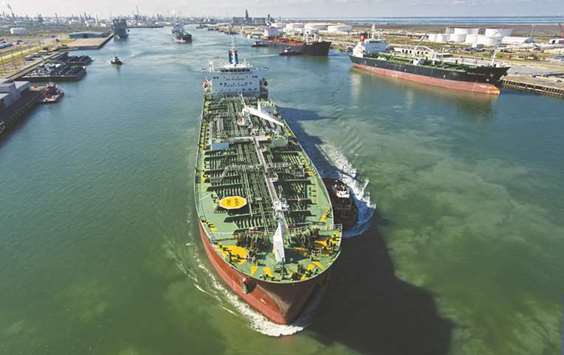The latest standoff between the US and Iran may be leaving oil-tanker owners in more of a bind than in previous years. As the US reimposes sanctions on the Islamic Republic, firms that help ferry Iranian oil risk losing access to the American financial system, similar to earlier in the decade when such measures were enforced. Additionally, this time around, they’ll have to contend with being cut off from the booming business of transporting crude pumped from shale fields in Texas or wells in the Gulf of Mexico, according to shipbroker Braemar ACM.
The US is shipping record amounts of crude following the end of an export ban in late 2015, a few months after Iran and world powers reached a deal that eased sanctions on the Middle East nation in exchange for curbs on its nuclear programme. After President Donald Trump pulled out of that accord earlier this month, the jump in American shipments is making tanker owners consider whether to stick with or shy away from the Gulf state.
“If you’re an operator of young, modern tonnage that can berth and lift cargoes from the US, you won’t want to be exposed to Iran,” said Anoop Singh, an analyst at Braemar ACM. “Vessels associated with Iranian oil are likely to be banned from US oil trade for about two years – and this would matter more now that the US exports its crude oil.”
Shipowners will have to make a decision – to transport Iranian oil and petroleum products or shun dealings with Opec’s third-largest producer – at a time when they are trying to revive their business after years of malaise from a global oversupply of ships and thin margins. They are also facing higher expenses from looming regulation seeking to lower emissions.
While the US may not currently feature among the biggest clients of some shipowners, few can afford to turn their backs to a market from which both exports of crude as well as refined fuel are rapidly rising. With more shale oil finding its way to the Gulf Coast for exports, or being diverted to domestic refineries to make products that are shipped abroad, more tankers of different classes are seen being drawn in to American ports.
“With a spike in exportable US crude and fuel comes a push to move more barrels faster,” Singapore-based Singh said in an interview. “This has encouraged more dredging works at shallower harbours, supporting demand for everything from small oil-product carriers to supertankers with the capability of carrying 2mn barrels of oil to destinations as far away as Asia.”
For instance, China – the world’s biggest oil importer – purchased about 3.9mn metric tonnes of crude from the US in the first three months of 2018, eight times higher than imports in the first quarter of 2017, according to customs data.

The Silver Cindy tanker sails out of the Citgo Refinery dock bound for Mexico with a load of gasoline at the Port of Corpus Christi in Corpus Christi, Texas (file). As the US reimposes sanctions on Iran, firms that help ferry Iranian oil risk losing access to the American financial system, similar to earlier in the decade when such measures were enforced.
